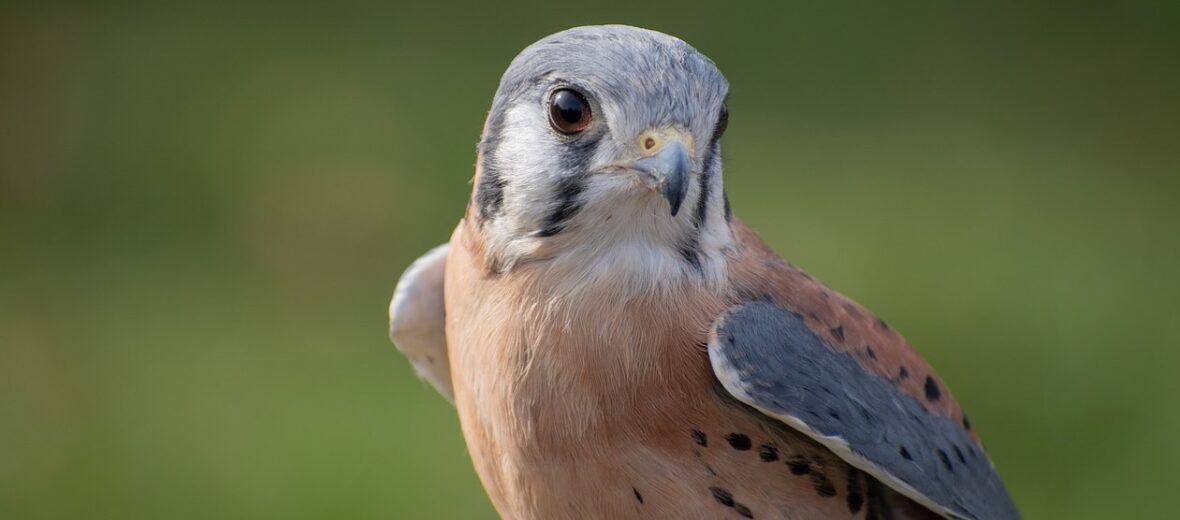
The American kestrel is the smallest falcon species in North America and the 2nd smallest falcon in the world. They can be found from Alaska all the way down to South America and from the east to the west coast. Their beautiful plumage makes them fairly easy to spot and their call is very distinctive. If you happen to have kestrels living in your area, you can hear them making their tell tale higher pitched “killy, killy” or “klee” sounds. These raptors are listed as Least Concern by the IUCN.
First the Stats…
Scientific name: Falco sparverius
Weight: Up to 4.1 ounces
Length: Up to 12.2 inches
Wingspan: Up to 24 inches
Lifespan: Up to 17 years
Now on to the Facts!
1.) Kestrels, like most all raptors, can see ultraviolet light. This helps them to detect urine markings left behind by some of their prey.
2.) Like many raptors, kestrels are sexually dimorphic (males and females look notably different) in that males are much smaller and have different markings than the females.
3.) Their main prey consists of cicadas, grasshoppers, beetles, dragonflies, scorpions, spiders, moths, butterflies, voles, mice, shrews, small songbirds, bats, small snakes, lizards, frogs, squirrels, and northern flickers.
4.) Unlike other falcons, kestrels cache food year round. They “cache” or hide food in places like tree roots, tall grass clumps, bushes, cavities, or in tree limbs so they have food to come back to later, when times are lean and to keep this food from thieves.
5.) Their main method of hunting is to sit and watch for moving prey items. The secondary method is called “kiting”. This is where they soar through the air, head first into the wind, beating their wings to stay almost totally stationary.
But wait, there’s more on the American kestrel!
6.) American kestrels have what are called “ocelli”. In the case of the kestrel, these ocelli come in the form of 2 black spots on the back of their neck. These ocelli are thought to have evolved to give the appearance of eyes that appear to be looking back at any would-be predator, helping to eliminate the element of surprise by an attacker.
7.) Kestrels are diurnal (active during the day).
Did you know…?
The American kestrel can fly at speeds of up to 40 mph.
8.) They often hunt as a family group. This gives the young birds an opportunity to practice their hunting skills with their parents before having to start life on their own.
9.) They rely on natural tree hollows, old woodpecker holes, rock crevices, and nooks in buildings, & other man-made structures for their nesting locations.
10.) Females have 1 – 2 broods per year, consisting of about 4 – 5 eggs each brood.
Now a Short American Kestrel Video!
Now a Short American Kestrel Calling Video!
Also, check out the Critter Science YouTube channel. Videos added frequently!
Want to suggest a critter for me to write about? Let me know here.



